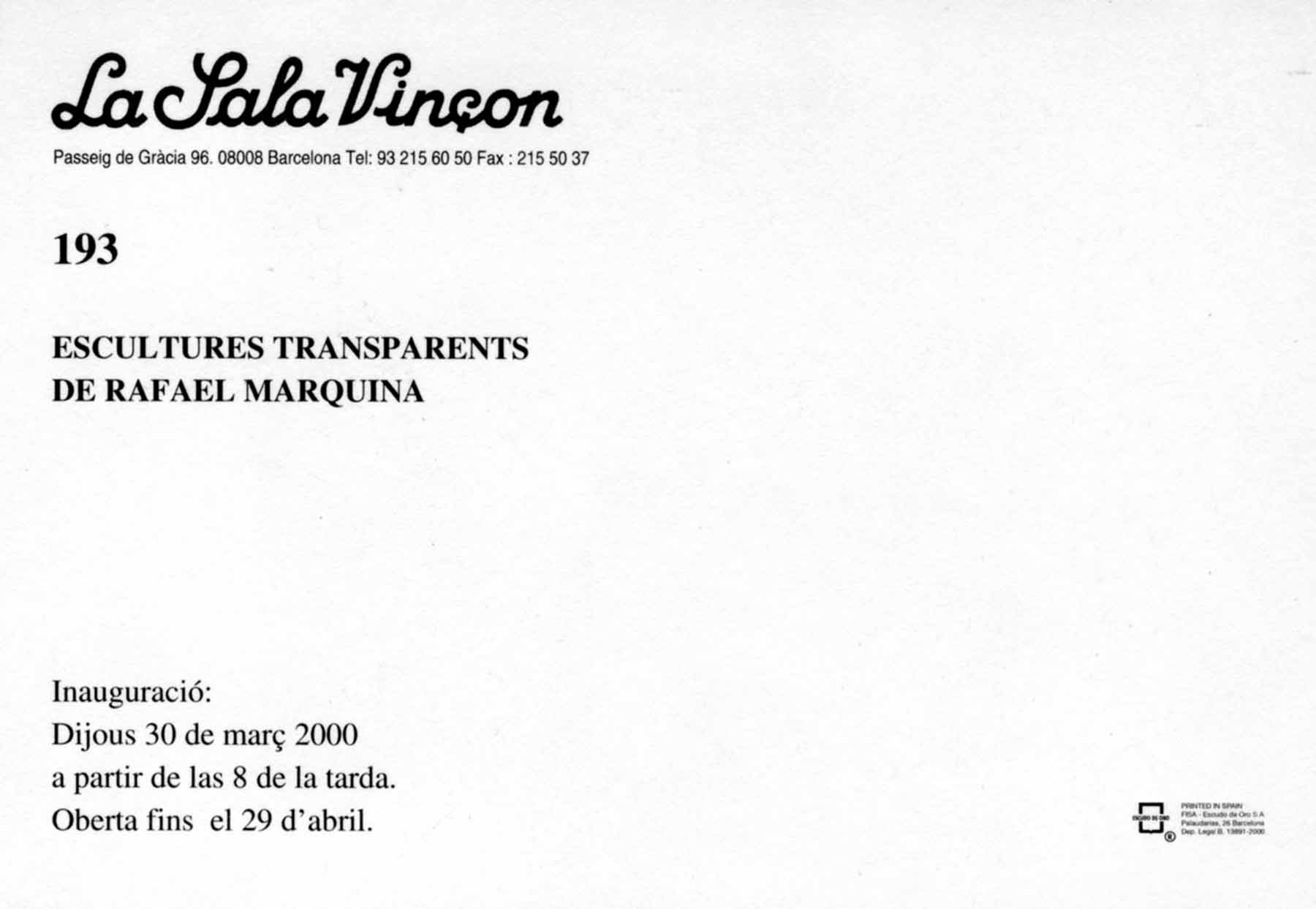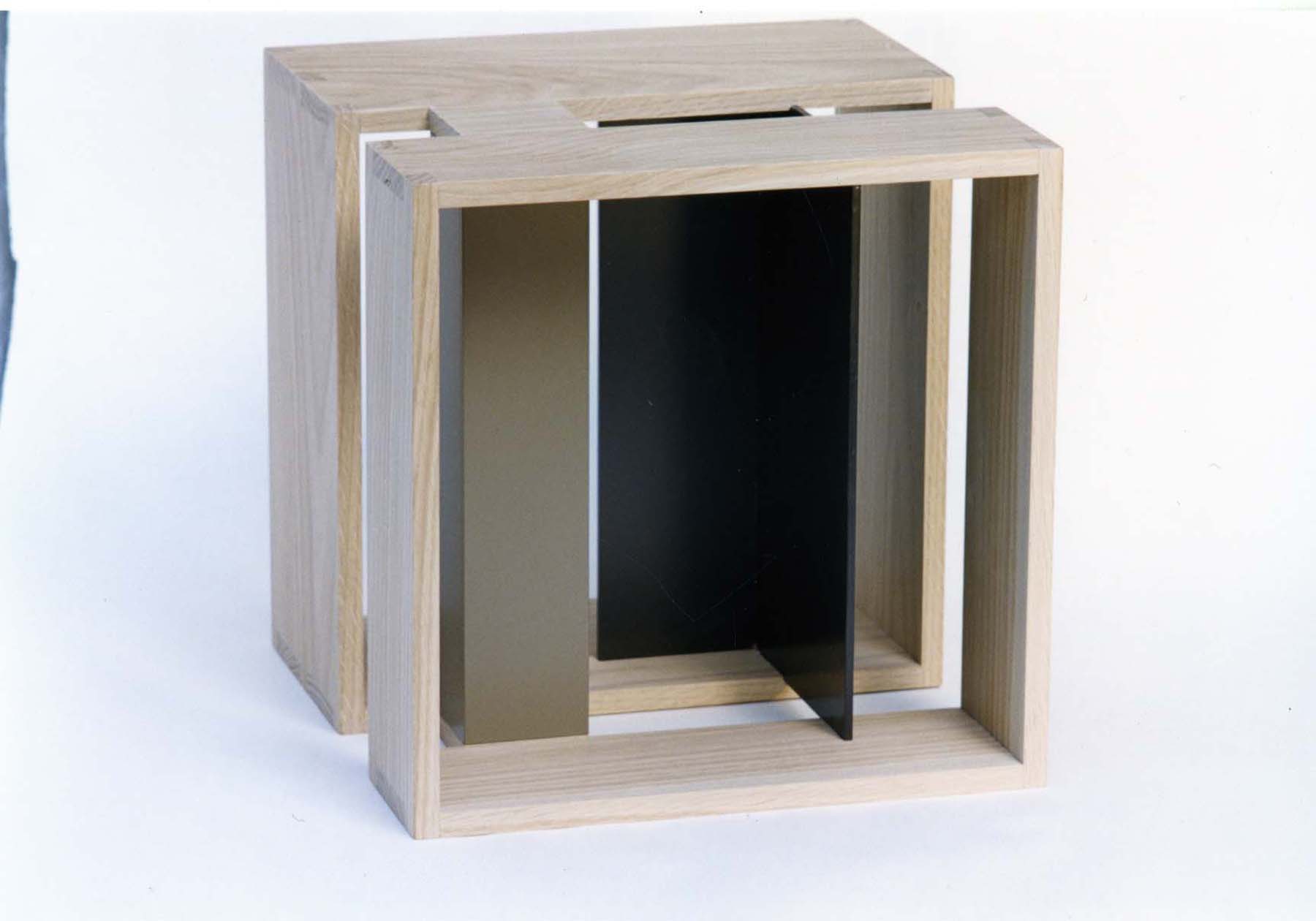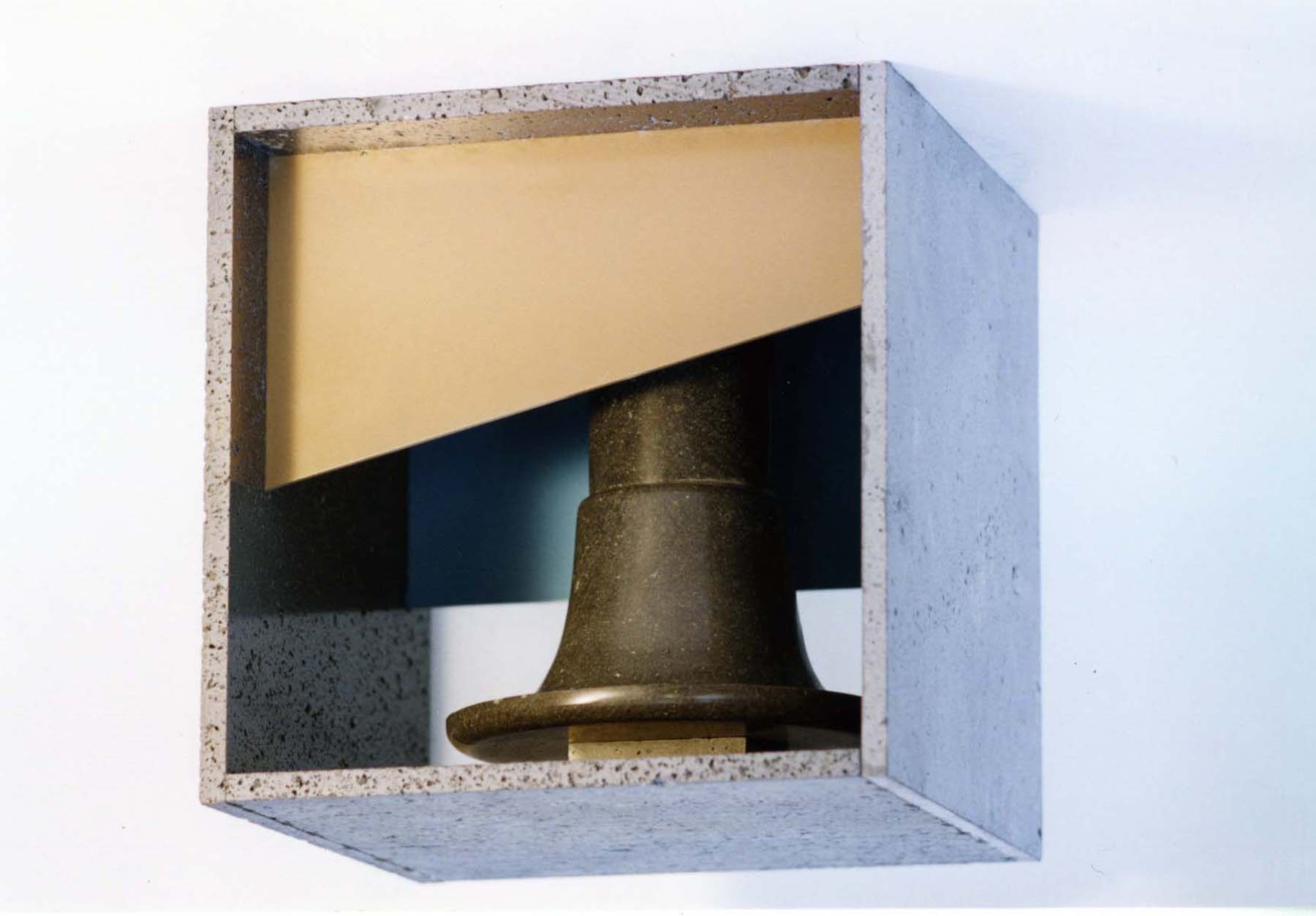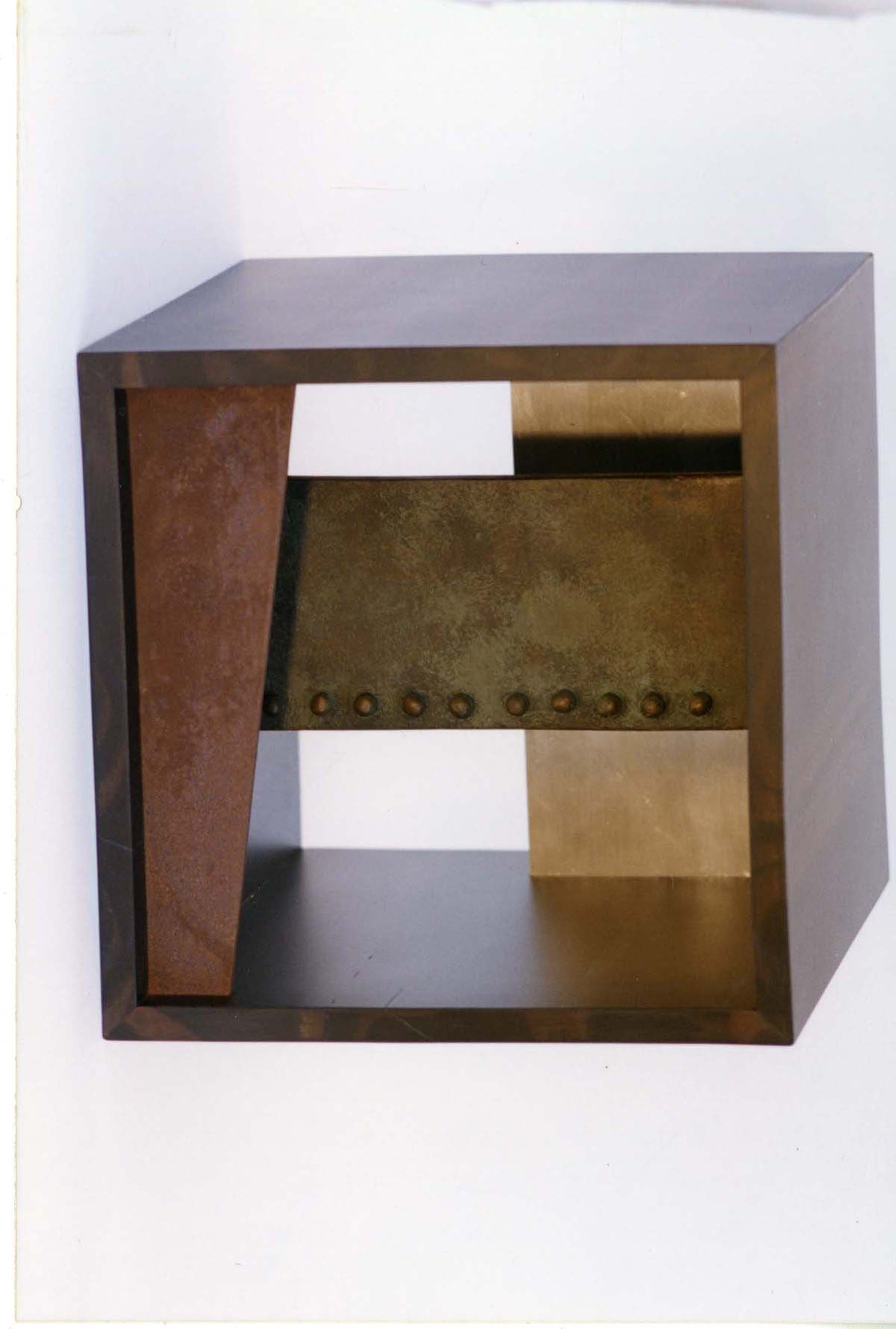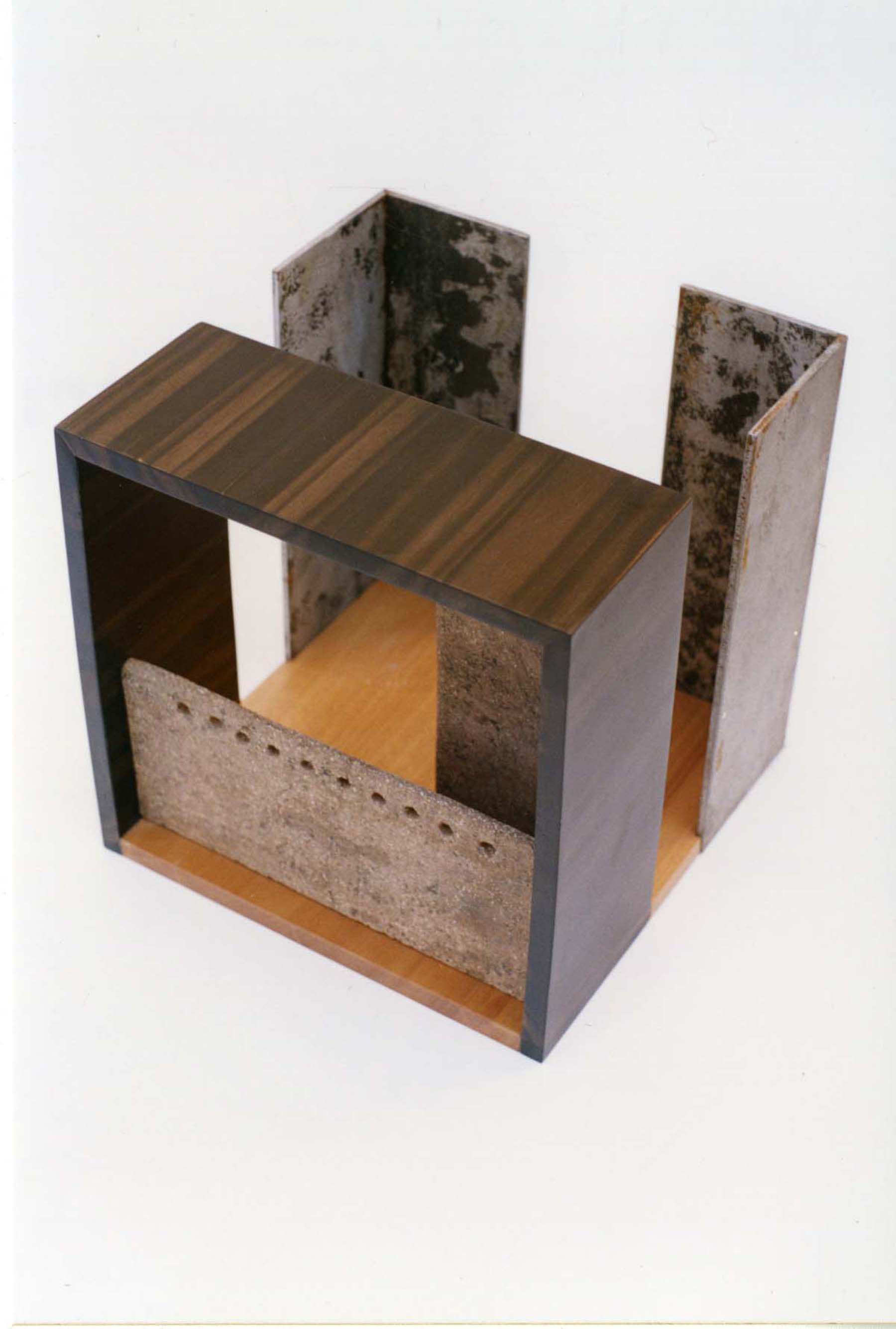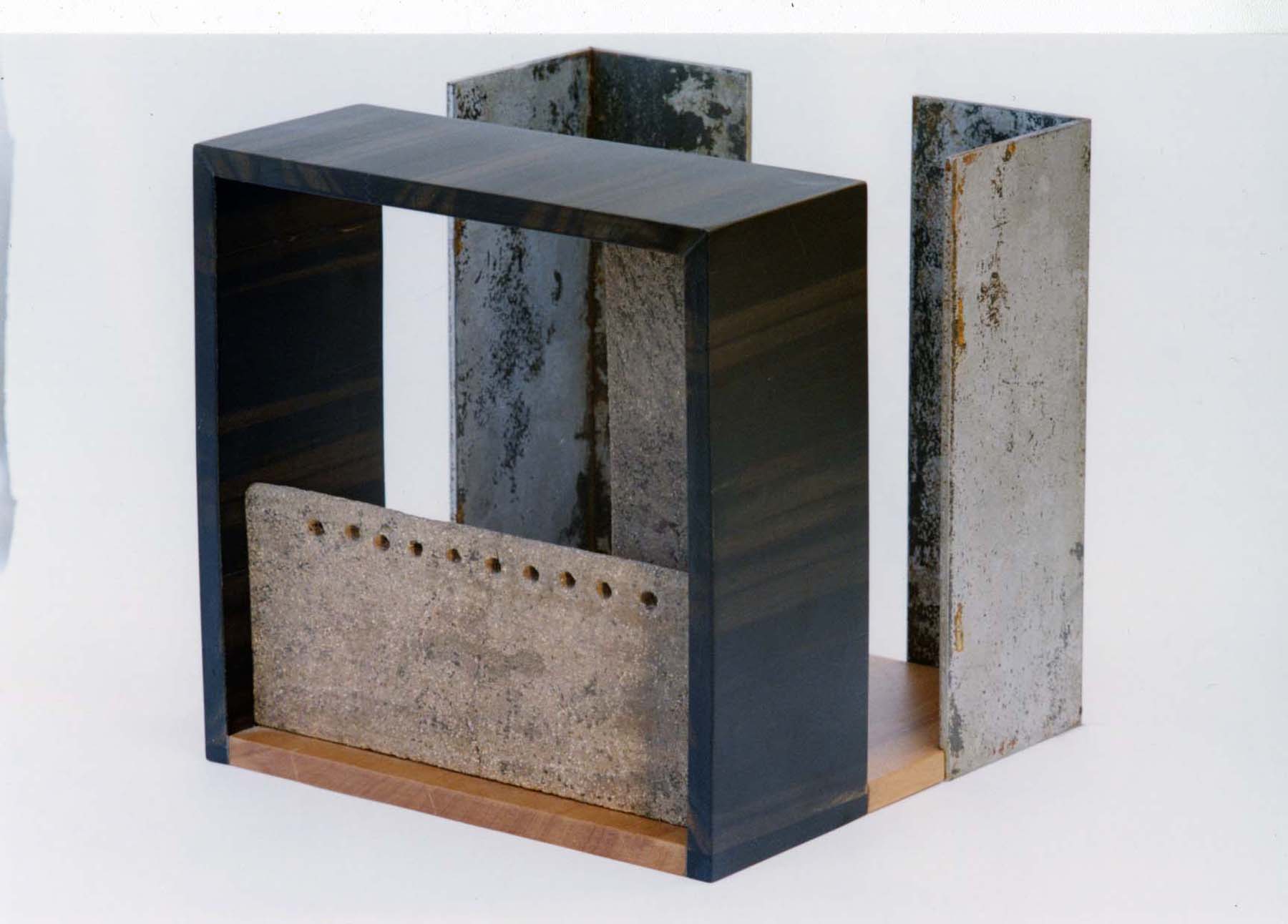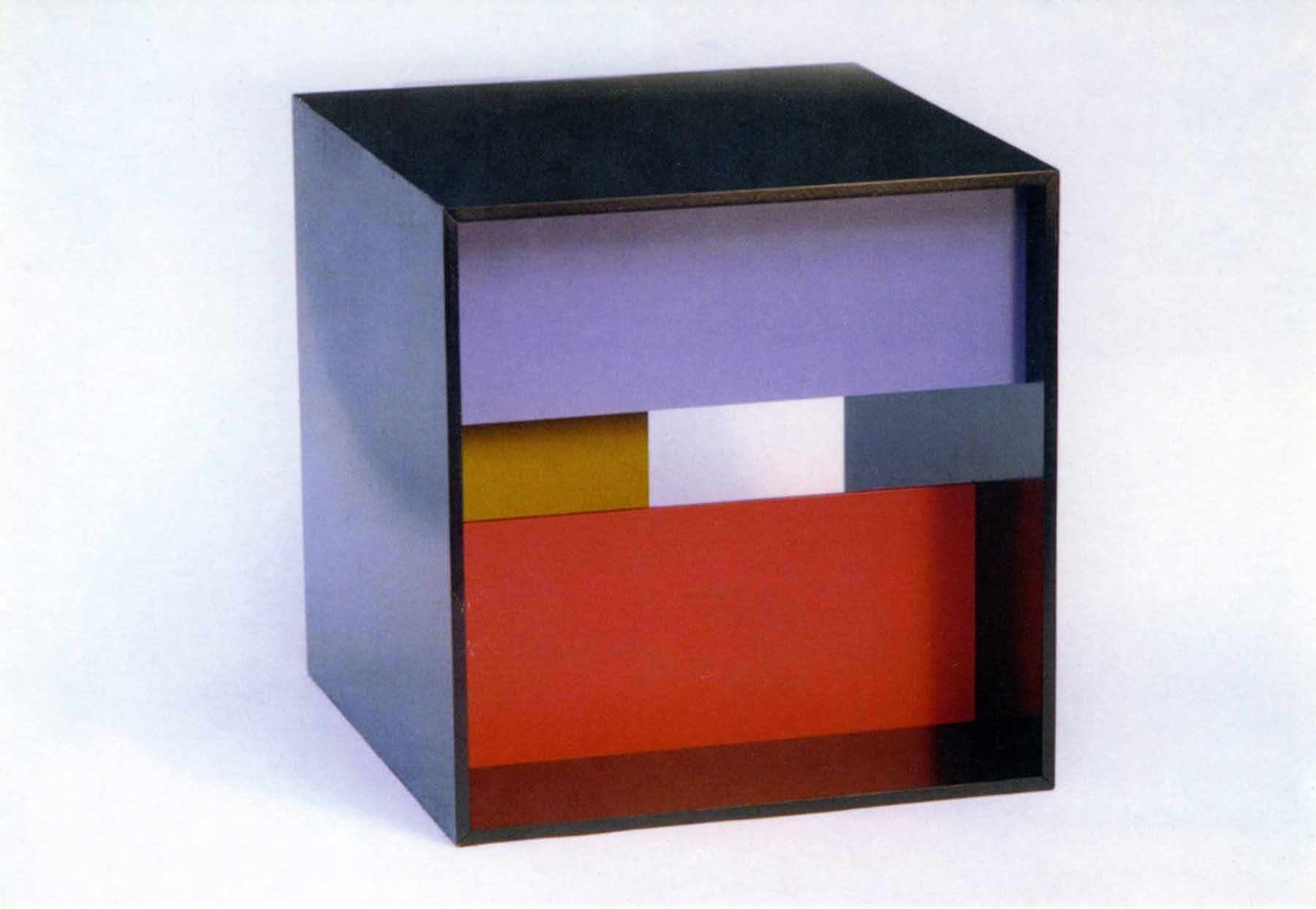
Escultures Transparents
Rafael Marquina
30/03/00. (Sala 193)
Rafael Marquina, a door to the imagination.
Rafael Marquina, the designer of the most practical and functional oilcan in the world, now surprises us by showing us another facet of his work, one that, according to the conventional repertoire of the arts, could be included in the denomination of sculpture. However, it is particularly difficult for me to classify as simple sculptures these plastic objects that have no utilitarian vocation, since Marquina’s concerns, approaches and intentions go beyond obtaining a beauty pleasing to the retina. These 30 x 30 x 30 x 30 cm cubes that open to a frontal, anterior and posterior view, with occasional lateral openings, are pieces constructed with great care. The size, the depth, the opaque and translucent parts… everything has been calculated to the millimeter, because Marquina intends to go beyond a static or one-dimensional vision of his works, as the viewer soon discovers. His obsession is to link the interior and exterior spaces, to help viewers see those areas that are created inside the cubes. Marquina induces the public to practice a visual research among windows, soffits, earrings, eyelets, planes with the aim of introducing them into these enclosures that are very close to the oriental idea of emptiness, of living and feeling it. In reality they are a contemporary version of the houses of the soul, spaces in which we do not live a physical experience, but a perceptive one, spaces that trigger our imagination.
For Marquina these constructions are corridor-spaces, traffic zones that each viewer can organize in his or her own way, without any conditioning factors. They are architectures of transparency, achieved through a subtle play of modulations, which we could call praises to light and shadow. The Russian constructivists, the neoplasticists, the kinetic, the geometric, the neoconcrete, the minimalists… all of Marquina’s knowledge (his research into pure form, his knowledge of industrial resources, the architecture of small objects, technical perfectionism, impeccable finishes and metaphysical colors). Paradoxically, he does not share any of the objectives or models of these trends or currents. And although he only coincides with them in the idea of order, conceptual rigor, compositional clarity, simplification of forms and apprehension of space, what sets him apart is that he creates spaces that cease to be spaces and become places, territories in which things happen, a “pure form of sensibility”, in Kant’s words.
Daniel Giralt-Miracle
